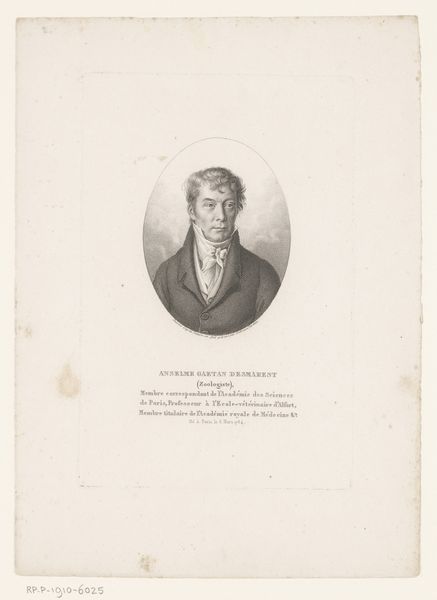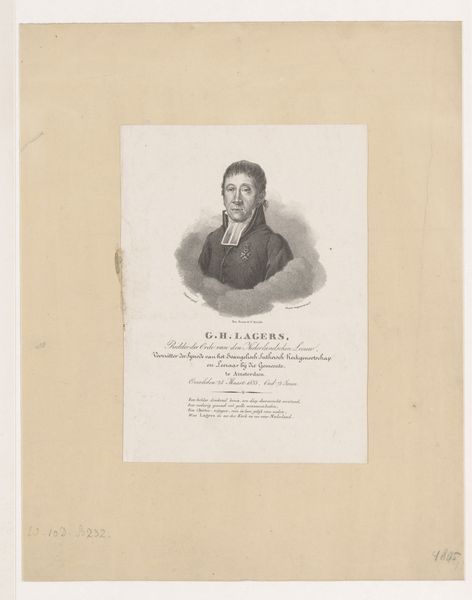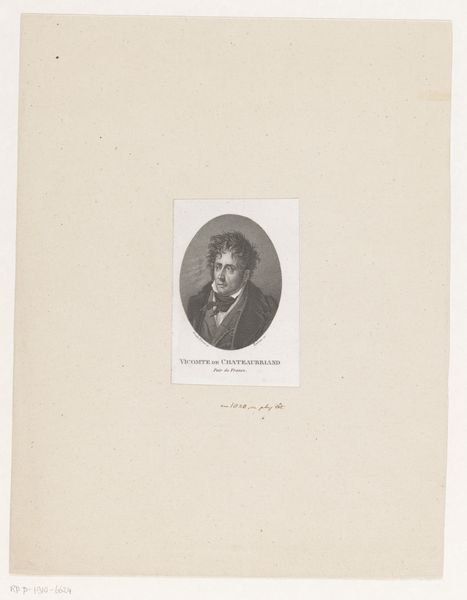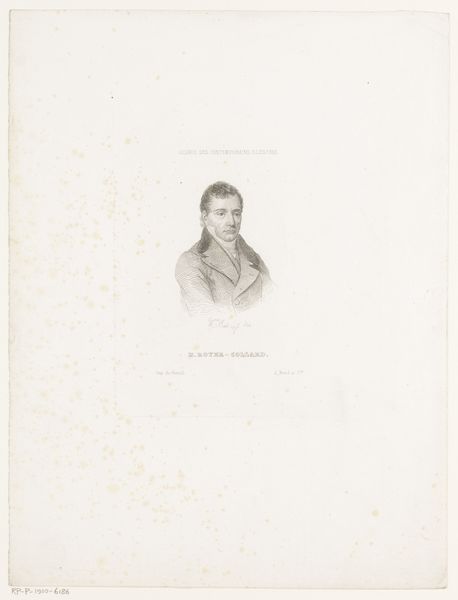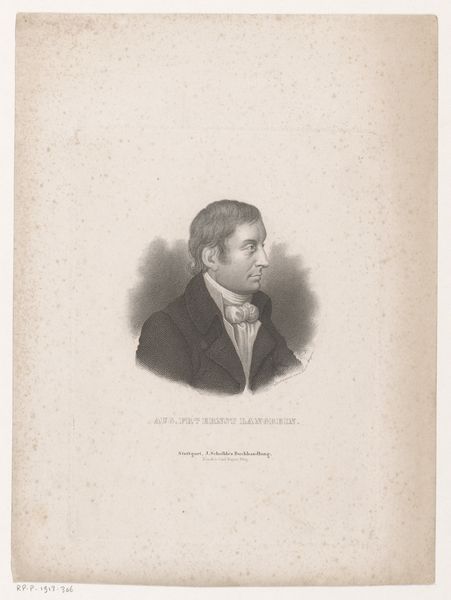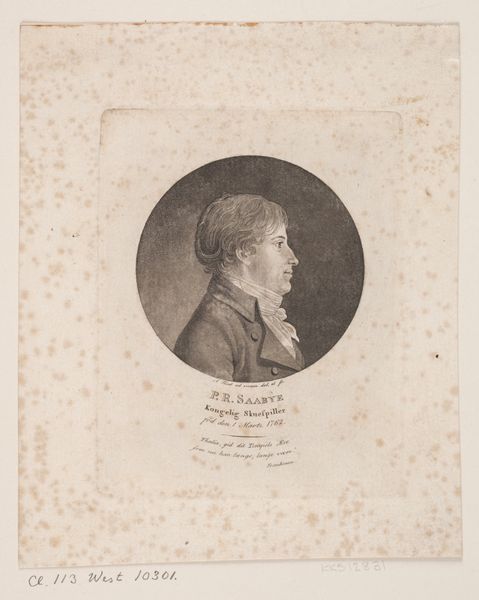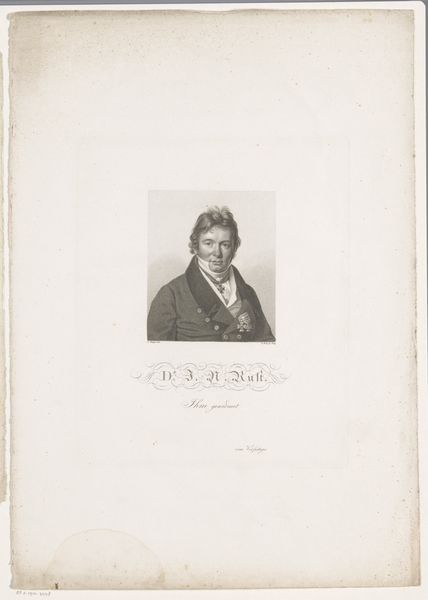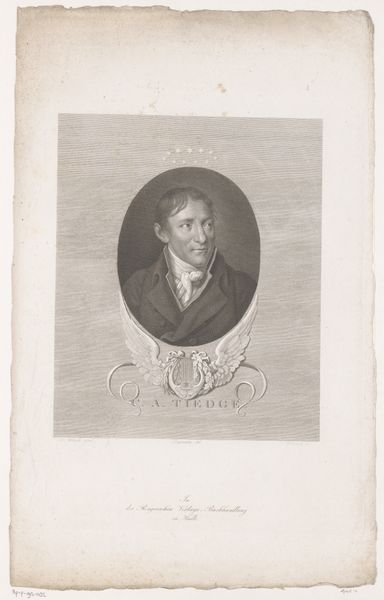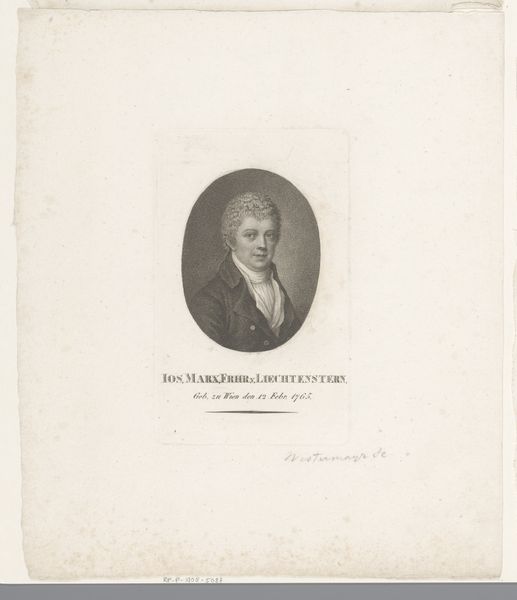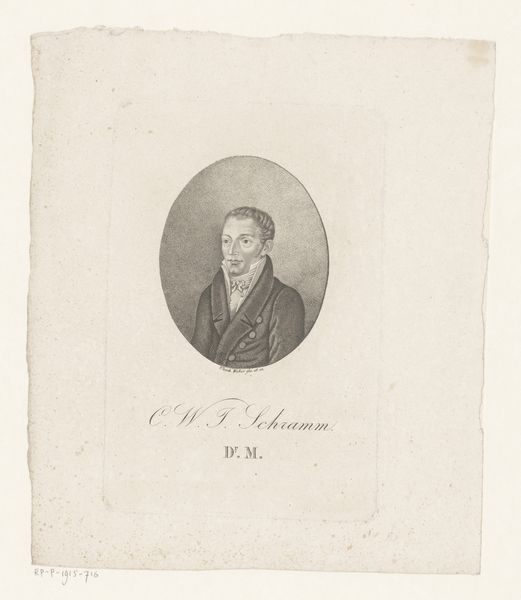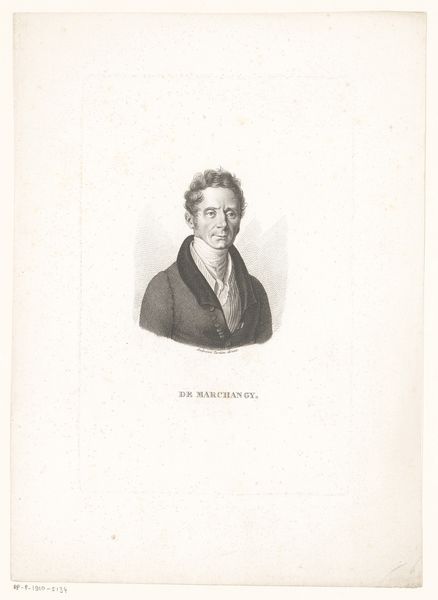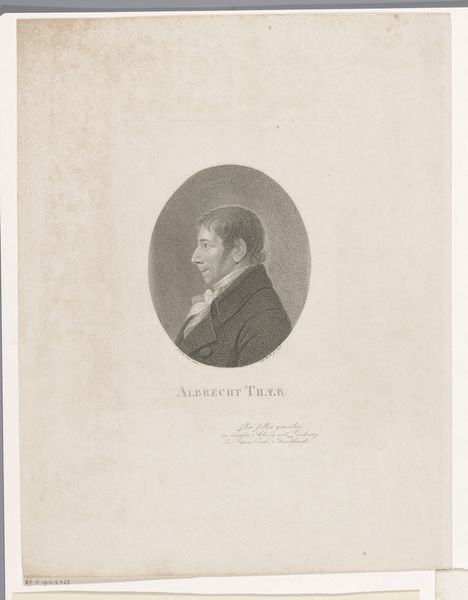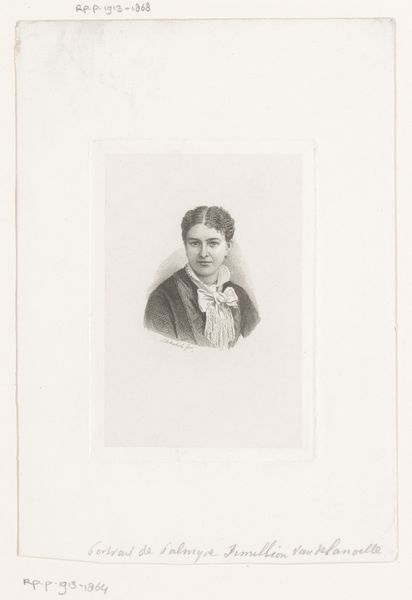
print, paper, engraving
#
portrait
#
neoclacissism
# print
#
paper
#
engraving
#
realism
Dimensions: height 180 mm, width 118 mm
Copyright: Rijks Museum: Open Domain
Curator: Here we have a print entitled *Portret van Christoph August Tiedge*. It’s an engraving on paper, crafted sometime between 1818 and 1832 by Gustav Zumpe. Editor: It has such a quiet, almost somber, mood. The sharp lines of the engraving lend a formal air, but there's something gentle about his expression, a hint of melancholy. Curator: The interesting thing about portraits of this era is the rise of a new kind of celebrity – writers and intellectuals achieving fame beyond the aristocracy. Tiedge, the subject here, was a popular poet, representative of that shift. Editor: Absolutely. And you see echoes of neoclassicism, but there's also the burgeoning realism, the move toward depicting the individual as they are. Look at the details in his face; it speaks of the Romantic era's fascination with inner experience. What symbols do you see? Curator: The clothing and tightly knotted cravat represent formality and bourgeois values, indicating Tiedge’s status in society and his adherence to societal norms, in addition to his seriousness of thought and purpose, aligning him with ideals of reason. The clean lines reflect Enlightenment rationality. Editor: The muted tones enhance the print's austere mood. I am drawn to the shape framing the bust, octagonal almost. It is so precise and solid! It projects the persona outward with precision and dignity, an attitude that art had a role to promote social behavior. Curator: That is interesting in itself— framing portraiture not just in ovals and rectangles signals an interesting aesthetic turn. In the period, you would also see how artists, like Zumpe, use their work to reflect political or social commentaries. Do you think that is at play here? Editor: Not in this one. But I think these portraits are interesting relics of an early public fascination with important figures—literary, political or otherwise. A demand which photography later fulfils. Curator: Right, portraits helped spread ideas about individuals but also created expectations about them in an emerging middle class and growing public sphere. Editor: Well, considering the time period, it provides a very specific depiction of an artist grappling with shifting values—it’s quite telling. Curator: Agreed; it gives us so much to think about how people presented themselves and how artists mediated those representations during the early 19th century.
Comments
No comments
Be the first to comment and join the conversation on the ultimate creative platform.
